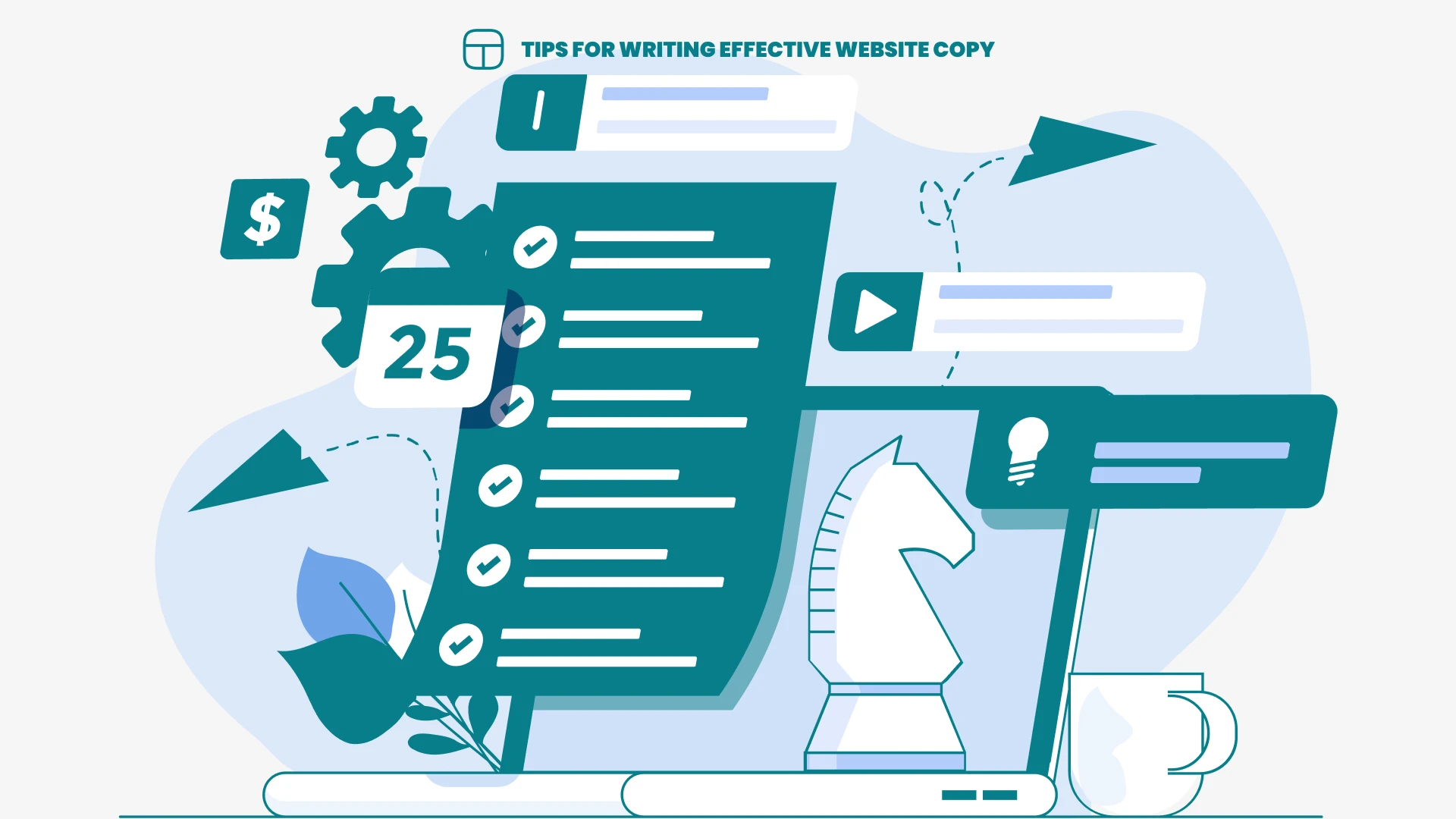Today, having effective website copy that speaks to your audience, and attracts and engages with them is super important. But what exactly is website copy, and why does it matter?
We will explore the importance of understanding your target audience, crafting compelling headlines, structuring your copy effectively, incorporating keywords for SEO, creating a strong call-to-action, and more.
Follow these tips to ensure your website copy is engaging, persuasive, and drives results.
Key Takeaways:
- Understand your target audience and their needs to create effective website copy.
- Use compelling headlines, subheadings, and visuals to capture and maintain the reader’s attention.
- Incorporate SEO keywords and a strong call-to-action to make your copy more impactful.
What Is Website Copy?
Website copy refers to the written content displayed on web pages, encompassing text, images, and multimedia elements. It plays a crucial role in conveying information about a brand, its products or services, and engaging with visitors.
Effective website copy not only informs users but also persuades them to take desired actions, such as making a purchase, signing up for a newsletter, or contacting the business.
Compelling copy that resonates with the target audience can significantly impact conversion rates and overall user satisfaction.
Moreover, incorporating SEO strategies and keywords in your copy will allow you to rank on search engines like Google, Bing, DuckDuckGo, etc.
Learn how to build your own website from scratch
WordPress + Elementor Pro
- A global presence
- Professionalism
- Open 24/7
- Earn passive income
- So much more
Why Is Effective Website Copy Important?
Effective website copy is crucial for achieving SEO benefits, resonating with user personas, and engaging your target audience. It serves as a powerful tool for content marketing strategies, driving traffic, and conversions.
When your copy is tailored to the needs and preferences of your audience, it not only improves your search engine rankings but also creates a strong connection with your potential customers.
- Analyzing audience data allows you to craft targeted content that speaks directly to their pain points and interests, resulting in higher engagement rates and more meaningful interactions.
- Integrating engaging copy into your blog posts, web pages, and social media content will further amplify your brand’s reach, increasing brand awareness and fostering deeper connections with your audience.
Understanding Your Target Audience
This is the first and most important step to creating website copy that resonates with readers, drives action, and aligns with your brand’s messaging.
A well-crafted website that truly understands its audience can captivate users from the moment they land on the page.
This is why keyword research is important. Finding the words that trigger different emotions and sentiments within your target audience is what will want them to continue navigating through your website.
Integrating visually appealing elements like high-quality images or interactive graphics can further enrich the user experience and reinforce your brand’s message.
Identifying Your Target Audience
Who are you speaking to?
Identifying your target audience involves analyzing demographics, interests, and behaviors to tailor website copy that is relevant and compelling.
Put yourself in your their shoes, become that person, and understand what he or she needs and more importantly, how you can help them.
Then, when it comes to your website copy, you know exactly how to speak to that person and provide them with the necessary solutions to their problems.
Aligning website copy with the audience’s interests not only increases relevance but also establishes a sense of understanding and empathy, fostering stronger relationships and brand loyalty.
Understanding Their Needs and Preferences
Understanding the needs and preferences of your target audience is essential for creating a positive first impression, aligning with SEO goals, and establishing the right tone and language in your website copy.
By delving deep into the demographics, behaviors, and interests of your audience, you can tailor your content to speak directly to their desires and pain points, thereby captivating their attention from the first click.
How to understand their needs and wants?
There are various ways to truly understand your customer and they all involve doing tons of research and getting up close and personal.
1. Engage on Social Media Platforms
- Direct Interaction: Join niche groups and forums on Reddit, Facebook, or LinkedIn related to your industry. Participate in discussions, ask questions, and note the concerns and desires people express.
- Polls and Surveys: Utilize Instagram stories or Twitter polls to ask direct questions about your audience’s preferences, challenges, or what they look for in products/services like yours.
- Observe and Analyze: Monitor comments and discussions on your own and competitors’ social media pages to understand what resonates with your audience and what doesn’t.
2. Conduct Surveys and Feedback Loops
- Customer Surveys: Send out surveys to your existing customer base or email list asking specific questions about their needs, preferences, and feedback on your offerings.
If you don’t have an email list, hijack someone else’s. Contact an influential perosn and simply ask nicely to be feautrued within their newsletter. Explain you are doing an experiement, and you need some data. Some will be cool with it, other will ask for money, but some will be ok with it…
- Usability Testing: Invite members of your target audience to test your website or product, observing how they interact with it and asking for feedback on the copy and overall experience.
3. Persona Development
- Create Detailed Personas: Develop personas representing your ideal customers based on demographic data, interests, and behaviors. Include their goals, challenges, and how they seek information online.
4. Keyword and Trend Analysis
- Keyword Research: Use SEO tools to find keywords and phrases your target audience uses when searching for solutions online. This gives insights into their concerns and interests.
Some recommended SEO tools to use are: Google Keywords Planner, Semruch, Ahrefs, and Answerthepublic
- Trend Analysis: Stay updated with industry trends and popular topics within your audience’s community. Tools like Google Trends or BuzzSumo can reveal what’s currently engaging your target audience.
5. Competitor Analysis
- Monitor Competitors: Look at competitors’ websites and social media channels. Analyze their content, what engages their audience, and how they address customer needs.
- Gap Analysis: Identify what your competitors are missing and how you can fill that void with your website copy and offerings.
6. Content Experimentation
- A/B Testing: Regularly test different versions of your website copy to see what resonates more with your audience. Monitor metrics like engagement, conversion rates, and bounce rates.
- Content Variety: Experiment with various types of content (blogs, videos, infographics) to see what your audience prefers and engages with most.
Examples:
- If targeting busy professionals, engaging on LinkedIn and conducting surveys through professional email newsletters can provide insights into their challenges and preferences.
- For a younger audience interested in sustainability, engaging through Instagram stories, and monitoring discussions in environmental groups can help understand their values and interests.
Crafting a Compelling Headline
Headlines are the most important parts of your copy; they are the ATTENTION GRABBERS.
Crafting compelling headlines for any industry is considered an art among copywriters and journalists. Headlines must contain the right amount of words, keywords, power words, positive sentiment words, and on top of that, they need to grab attention and be fun to read.
Strike a balance between creativity and clarity, ensuring that the headline captures attention while accurately representing the content.

Example Headlines:
1. Specificity and Relevance
- Good: “7 Proven Strategies to Triple Your Website Traffic in 30 Days
- Bad: “Ways to Get More Website Visitors”
The good headline promises specific results and creates a sense of urgency, while the bad headline is vague and lacks compelling elements.
2. Use of Numbers and Lists
- Good: “5 Common Mistakes First-Time Homebuyers Make and How to Avoid Them”
- Bad: “Mistakes First-Time Homebuyers Make”
Numbers and lists imply structured and easy-to-digest content, making the good headline more appealing than the generic bad headline.
3. Clarity vs. Mystery
- Good: “How to Save 25% on Your Energy Bills This Winter”
- Bad: “Want to Save on Energy? Read This!”
The good headline clearly states the benefit and context, while the bad headline tries to create curiosity but ends up being too vague and clickbaity.
4. Action-Oriented Language
- Good: “Transform Your Morning Routine with These 3 Simple Steps”
- Bad: “About Morning Routines”
The good headline uses action verbs and promises a transformation, making it more compelling than the bad headline, which is passive and nondescript.
5. Targeting Pain Points
- Good: “Struggling to Sleep? Try These 3 Science-Backed Methods Tonight”
- Bad: “Various Methods to Help You Sleep”
The good headline directly addresses the reader’s problem and offers a solution, making it more effective than the bad headline, which is impersonal and broad.
6. Including Power Words or Emotional Triggers
- Good: “Unlock Your Brain’s Full Potential with These Daily Exercises”
- Bad: “Some Exercises for Your Brain”
The good headline uses power words like “Unlock” and “Full Potential,” making it more dynamic and compelling than the bad headline, which lacks emotion and impact.
7. Implies Immediate Value
- Good: “Boost Your Conversion Rates Today with These Proven Copywriting Tips”
- Bad: “Some Copywriting Tips”
The good headline suggests immediate value and uses strong verbs, while the bad headline is generic and lacks urgency.
Structuring Your Website Copy
Structuring your website copy involves strategic keyword research, effective formatting with headings, subheadings, and paragraphs, and optimizing content for SEO to enhance visibility and readability.
The process of keyword research is essential in understanding what terms users are searching for to align your content accordingly. By identifying relevant keywords, you can tailor your copy to better match search intent, improving your chances of ranking higher in search engine results.
Formatting techniques such as using headings, subheadings, and bulleted lists not only make your content visually appealing but also help search engines better understand the hierarchy and relevance of information on your page.
Using Subheadings and Bulleted Lists
Utilizing subheadings and bulleted lists is a content marketing strategy that enhances brand awareness and delivers valuable tips and information in a structured format that is easy for readers to consume.
Subheadings are crucial in breaking down content into digestible sections, guiding the reader through the information logically.
Subheadings improve SEO by providing a clear structure for search engines and also make your content scannable, allowing readers to quickly find what they are looking for.
Similarly, using bulleted lists helps to highlight key points, making them stand out and easily memorable.
Keeping Sentences and Paragraphs Short
Keeping sentences and paragraphs short is a writing technique that follows best practices and guidelines for creating easily digestible content that maintains reader engagement and clarity in communication.
Concise writing plays a crucial role in the digital world where attention spans are often short and information overload is common.
By breaking down complex ideas into bite-sized chunks, writers can enhance the user experience and guide readers through the website seamlessly.
Short sentences not only improve readability but also improve the flow of information, making it easier for readers to grasp key points efficiently.

Using Visuals to Break Up Text
Incorporating visuals to break up text enhances the writing style, making content more reader-friendly and engaging. Visual elements such as images and infographics can complement textual information effectively.
When used strategically, visuals can grab the reader’s attention and convey complex ideas more efficiently.
An eye-catching image can illustrate a concept faster than a paragraph of text.
Incorporating interactive elements like videos or animations can further enrich the user experience, keeping visitors on the website longer and encouraging them to explore more content.
Incorporating Keywords for SEO
Incorporating keywords for SEO is essential for building an emotional connection with readers, establishing trust, enhancing brand credibility, and optimizing content for visibility across social media platforms.
Strategically placing keywords within your website copy can significantly impact how search engines interpret and rank your content.
Remember, the key is to strike a balance between incorporating keywords naturally and ensuring that your content remains valuable and informative. This approach not only helps in boosting your SEO efforts but also in establishing your authority in the industry and fostering long-term relationships with your readers.
Creating Call-to-Action Buttons
Now, the CTA! This is a must if you need (or want) the reader to take action on your site.
This can be: sending them to the product page to make a purchase, adding them to a newsletter, or requesting for a Google review.
When creating a compelling CTA, align the message with the overall marketing strategy, ensuring coherence and relevance to the target audience.
A well-crafted CTA not only prompts users to take the desired action but also conveys a sense of urgency or exclusivity.

Proofreading and Editing Your Copy
Proofreading and editing your copy is a critical step in fine-tuning the writing process for delivering high-quality website copy.
Thorough proofreading involves carefully reviewing your text for grammatical errors, typos, and inconsistencies to create polished content that resonates with your audience.
Effective editing tips include checking for tone consistency, proper formatting, and structuring information logically.
Implementing best practices for editing includes creating style guides, utilizing tools like spell checkers and grammar software, and seeking feedback from peers or professional editors to maintain consistency and clarity in your messaging.
Testing and Analyzing Your Website Copy
Share your copy with as many people as possible! Request their feedback and opinions and what can be changed or done better.
In today’s digital landscape, where user experience plays a significant role in the success of a website, leveraging data analytics can help refine your content strategy to create more impactful and relevant messaging.
Check for: engagement times, bounce rates, and amount of sessions on your site.
If you are using WordPress for your website, a great analytics tool to keep track of these metrics is Independent Analytics.
By tracking key performance indicators such as click-through rates, bounce rates, and conversion rates, you can identify areas for improvement and implement targeted solutions to optimize user engagement.
Learn how to build a website using these principles ⇒
Frequently Asked Questions
What are some tips for writing effective website copy?
Some tips for writing effective website copy include understanding your target audience, using a conversational tone, keeping sentences and paragraphs short, and incorporating keywords for SEO.
How important is understanding your target audience when writing website copy?
Understanding your target audience is crucial for writing effective website copy. It allows you to tailor your content to their needs, interests, and pain points, making it more engaging and persuasive.
Why is using a conversational tone recommended for website copy?
Using a conversational tone makes your website copy more relatable and personable. It helps build a connection with your audience and keeps them engaged throughout the content.
What is the benefit of keeping sentences and paragraphs short in website copy?
Short sentences and paragraphs are easier to read and understand, especially on a screen. They also help break up the text and make it more visually appealing, improving the overall flow of the content.
How does incorporating keywords help with SEO in website copy?
Including relevant keywords in your website copy helps search engines understand what your content is about and rank it higher in search results. This, in turn, can drive more traffic to your website.
Are there any other tips for writing effective website copy?
Some additional tips include using headings and subheadings to organize your content, including a clear call-to-action, and proofreading and editing your copy for grammar and spelling errors.”



